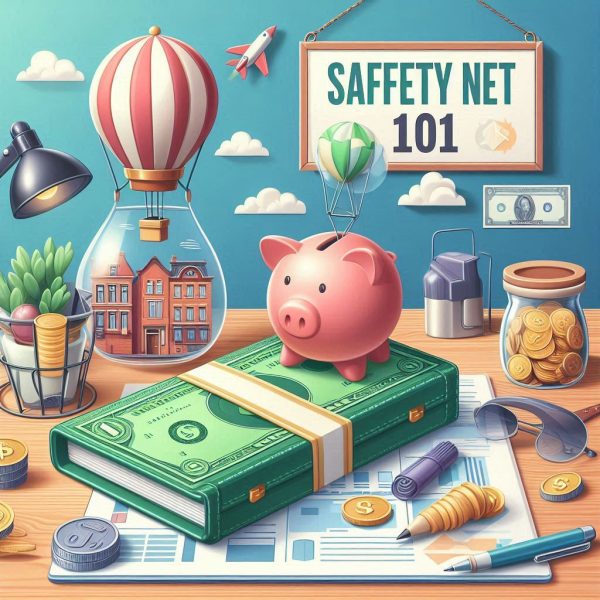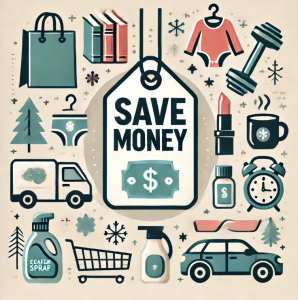Build an Emergency Fund: Secure Your Future Without Sacrifices

Why You Need an Emergency Fund
Building an emergency fund is one of the most critical steps to achieving financial security. This safety net ensures you can cover unexpected expenses like medical emergencies, car repairs, or job loss without relying on high-interest loans or credit cards. In this guide, we’ll show you how to build an emergency fund without sacrificing your lifestyle. Learn more about the psychology of saving and spending to improve your financial habits.
How Much Should You Save in Your Emergency Fund?
Assess Your Monthly Expenses
Start by calculating your monthly expenses, including rent/mortgage, utilities, groceries, insurance, and transportation. This will help determine how much you need to cover essential costs.
Set a Savings Target
Financial experts recommend saving three to six months’ worth of living expenses. Your exact target depends on your situation:
- Three Months: Suitable for individuals with stable jobs.
- Six Months or More: Best for families, freelancers, or those with less predictable income.
Smart Strategies to Build Your Emergency Fund
1. Adjust Your Budget
Analyze your spending and identify non-essential expenses. Redirect these savings into your emergency fund. Small changes, such as eating out less or canceling unused subscriptions, can make a big difference.
2. Set Monthly Savings Goals
Consistency is key. Even saving $100 a month can add up to $1,200 annually.
3. Automate Your Savings
Set up automatic transfers from your checking to your savings account to ensure you save regularly.
Where to Keep Your Emergency Fund
High-Yield Savings Accounts
These accounts offer higher interest rates than standard savings accounts, making them an ideal place for emergency funds. Learn more about high-yield savings accounts: NerdWallet – Best High-Yield Savings Accounts
Money Market Accounts
These accounts offer competitive interest rates and limited check-writing privileges. However, they may require a higher minimum balance. Compare money market accounts: Investopedia – Best Money Market Accounts
Certificates of Deposit (CDs)
CDs provide higher returns, but your money is locked for a set period. Use them only if you have other liquid savings available. Check the best CD rates: Bankrate – Best CD Rates
Ways to Boost Your Emergency Fund
1. Take on a Side Gig
Platforms like Upwork, Fiverr, or Uber can help you earn extra income.
2. Sell Unwanted Items
Use platforms like eBay or Facebook Marketplace to sell things you no longer need.
3. Save Unexpected Windfalls
Tax refunds, bonuses, and financial gifts should go directly into your emergency fund.
When and How to Use Your Emergency Fund
When to Use It
Only use your emergency fund for true financial emergencies such as:
- Medical emergencies
- Urgent car repairs
- Job loss or income reduction
Rebuilding After Use
After using your fund, adjust your budget to restore it as quickly as possible.
Real-Life Examples of Emergency Fund Success
Case Study 1: Single Professional
Jane, a 30-year-old marketing manager, earns $60,000 per year. With $3,000 in monthly expenses, she aims for a three-month emergency fund of $9,000. She cuts back on dining out, saves $200 monthly, and automates a $300 transfer to savings. In 18 months, she reaches her goal.
Case Study 2: Family with Children
Mike and Lisa, a couple with two kids, have a combined income of $90,000 and $5,000 in monthly expenses. They aim to save $30,000 for six months’ expenses. By reducing their entertainment budget and earning an extra $200 monthly through freelancing, they save $700 per month, reaching their goal in just over three years.
Staying Motivated to Save
1. Visualize Your Goal
Use a savings tracker to monitor progress and stay motivated.
2. Celebrate Milestones
Acknowledge small wins, like reaching 25% or 50% of your goal.
3. Stay Focused on Your Financial Security
Remember why you’re saving—to ensure financial stability and peace of mind.
Conclusion
Building an emergency fund is essential for financial security. By setting realistic goals, budgeting wisely, and utilizing smart saving strategies, you can create a strong financial safety net without sacrificing your lifestyle. Start small, stay consistent, and watch your savings grow.






